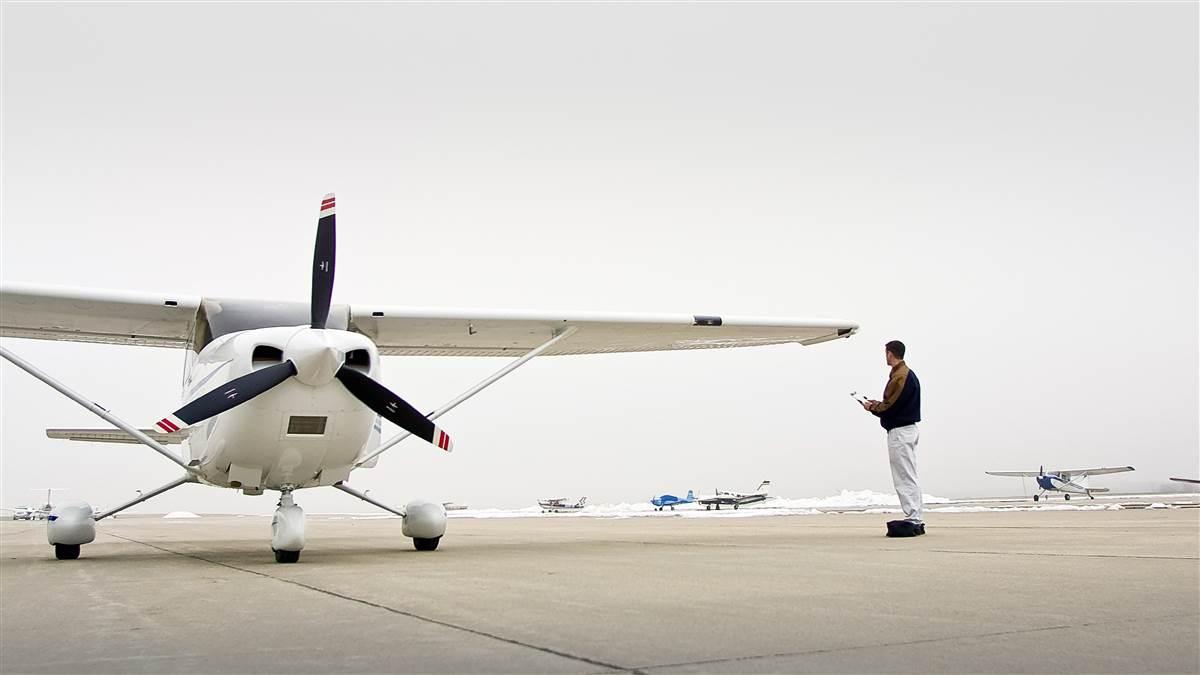Instrument tip: Uncontrolled departure
Taking off IFR without a tower

Using that logic, an instrument student should be required to depart IFR from an airport without a control tower during training. As a skill it isn’t particularly hard, but the procedures can be mystifying if you aren’t exposed to them.
The steps involved in departing IFR from a nontowered airport—or a towered airport when the tower is closed—are somewhat similar to those at a towered airport. You get weather, obtain a clearance, call on the radio when departing, and then check in with departure control. The primary difference is in how the clearance is obtained. There are three basic methods.
- Use a remote communication outlet. This is the easiest way to get a clearance on the ground from a nontowered airport, if one is available. Call up approach control or flight service on the RCO and they will provide you with the clearance, a release time, and a clearance void time. These are distinct elements. The clearance will be similar to any other ATC route and altitude clearance. A release time is ATC’s permission to depart from the airport. It’s often immediate, such as “November Two-Three-Alpha is released,” although sometimes it’s in the future, such as, “November Two-Three-Alpha released at 1200Z.” The release time is necessary because in order for you to depart the nontowered airport, ATC must clear the airspace of other instrument traffic. If it’s busy you may have to wait until clearing the airspace is possible. The void time is an upper limit on the departure, for the same reason—they can’t hold the airspace forever. Approach or flight service will say something like, “Clearance void if not off by 1210Z. Time now 1200Z. If not off by 1210Z contact New York Approach on one one eight point nine with intentions.” If you don’t take off by the void time, it’s important to do as the clearance says and contact the facility as soon as possible to obtain a new clearance.
- Call on the phone. The steps for this method are the same for an RCO, with the only difference being that you reach clearance delivery by phone instead of through the airplane radio. With a Bluetooth-enabled headset this method isn’t hard. But without it, you must either call before starting up, which can make the clearance void time tight, or you have to shout and strain to listen while the airplane is idling. Neither is desirable.
- In the air. Assuming the weather is nice, there’s nothing stopping you from taking off VFR, calling the nearest approach facility, and requesting your clearance in the air. However, as one of flying’s many paradoxes, this is both the most convenient method and the one most fraught with problems. Most important, you must be sure the weather is VFR and you can maneuver safely. If ATC is busy, can’t receive your transmissions down low, or your flight plan is lost, it can take 15 minutes or more to pick up the clearance. In good weather that’s no problem. But in poor weather it’s a recipe for an accident. Any experienced instrument pilot can tell you a few stories about circling below a layer, trying to avoid certain airspace, or some other highly saturated task scenario while waiting to obtain a clearance in the air.
If you decide to get the clearance on the ground you can find the most efficient way to do so in the FAA chart supplement. The airport listing will specify the RCO frequency and facility, if one exists. Or you can use the listing for the clearance delivery phone number included in every nontowered airport entry. Most flight planning apps have this information as well.
The steps involved in departing IFR from a nontowered airport are somewhat similar to those at a towered airport. The primary difference is in how the clearance is obtained.The primary dilemma in getting a clearance on the ground is when to call for it. Doing so at the ramp means you can listen and copy with your full attention, and not have a delay on departure. But the downside is that you may have to hustle to make the clearance void time. Take off after that time into weather and you’ve broken some regulations. As an alternative you can wait until you are near the end of the runway and completely ready to go, but then you could be waiting, and if you’re at the hold-short line, likely blocking other traffic. There’s no right answer to this. You’ll learn through experience what works best for you.
Although we usually think of departing IFR from a busy tower-controlled airport, the system is very flexible and set up in such a way that you could take off into the clouds from a grass strip in the country almost as easily as you could from a major international airport.



